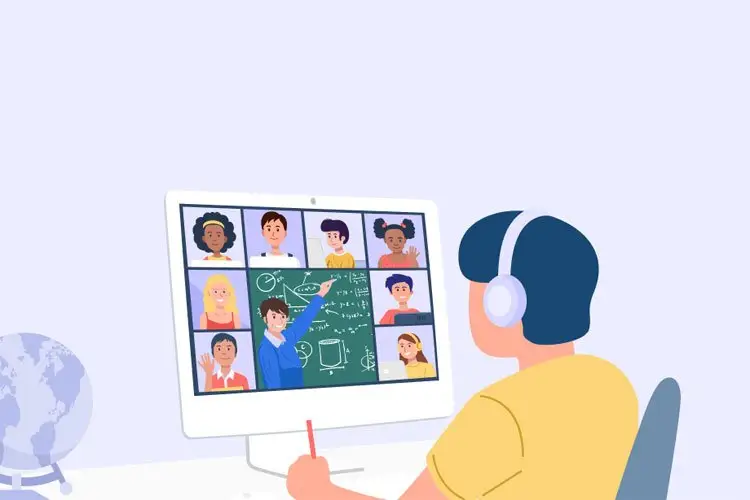
TOUGH TIMES IN EDUCATION: THE COVID-19 CRISIS
- [printfriendly]
The world has been suffering from the spread of Covid-19, which was recognized as a pandemic in early 2020, and its unexpected variants since the fourth quarter of 2019.
No one denies the negative impact of this pandemic on our lives. Its effect has hit different sectors all over the world. Industry, trade, transportation, aviation, service providing, all kinds of business, in addition to education, are merely examples of the most affected sectors.
Besides this effect, the huge number of confirmed cases and high mortality rates in some affected countries have created a feeling of fear against social gatherings. As a precautionary procedure, governments all over the world moved toward lockdown and curfew. They issued several policies and procedures in order to control social activities such as social isolation, social distancing, and institutional and self-quarantine. Accordingly, social isolation became one of the most successfully used methods during this crisis to limit mixing and direct contact between people. Therefore, social isolation can be defined as the loss of social relations at the personal level or disengaging essential social institutions from each other at the societal level.
While millions or even billions of people were forced to stay in their homes to evade the infection and to activate social isolation, alternative mediums of communication have become needed. During the pandemic, distance learning or electronic learning (e-learning) was the chosen medium used in order to continue the learning process. The existence of Learning Management Systems (LMSs), e.g., Moodle, WebCT, Blackboard, and video conferencing applications, e.g., MS-Teams, Zoom, and WebEx helped in compensating for the shortage in physical contact between students and instructors.
Distance learning is reported as one of the most important and fastest-growing areas of the high technology development sector, especially in academic environments. A LMS is as a web-based software platform that provides an interactive online learning environment and automates the administration, organization, delivery, and reporting of educational content and learner outcomes. It provides an easier avenue for sharing learning materials and activities than the traditional classroom where it could take too much time to deliver these materials.
Whereas the interaction and delivery methods used in online classes are dramatically different from traditional classes, undoubtedly, the successful sharing of knowledge, in general, can help to improve study habits and be successful in any educational setting, regardless of the type of learner involved. Although the instructor is a very important factor in the learning process, the advantages of e-learning systems change the role that the instructor plays in this process. Distance learning gives an opportunity to anyone to learn anytime and anywhere in a rapid and customized way. Currently, many LMSs, either open-source or commercial, available in the marketplace offer several intelligent, creative, and innovative electronic teaching and learning tools.
Lastly, no one denies the important role of technologies in growing any working environment; the learning environment is no exception. Technology is a suitable modern way for both instructors and learners to communicate in a virtual environment by ignoring the boundaries of distance and time. E-learning involves the use of multimedia interaction in order to get the best form of online communication. Therefore, LMSs enable teachers to share materials, create assessments, and communicate with their students in a professional virtual way without the hindrance of time and place. During this tough time of the pandemic, many schools, universities, and higher education institutions over the world activated their contingency plans and moved to distance learning. It is obvious that technology is compensating, filling the gap, and helping education recover from the negative effect of the Covid-19 crisis.
REFERENCES:
- Momani A.M., Alsakhnini M. & Hanaysha J. (2022). Emerging Technologies and Their Impact on the Future of the Tourism and Hospitality Industry. International Journal of Information Systems in the Service Sector. Vol. 14(1), pp. 1‒18. DOI: 10.4018/IJISSS.287579
- Momani A.M. (2021). Using Multi-Attribute Decision-Making Approach to Evaluate Learning Management Systems. International Journal of Web-Based Learning and Teaching Technologies. Vol. 16(4), pp. 117‒131. DOI: 10.4018/IJWLTT.20210701.oa7
- Momani A. M. (2015). “Easy Way to Evaluate Learning Management Systems”. ISBN 9783639862218, Scholars Press, Germany.
- Momani A.M. (2011). Web-based Evaluation System for Learning Management Systems. First International Conference on Computer Science, Engineering & Applications (ICCSEA-2011).
- Momani A.M. (2010). An Analysis for the Most Important Features of E-Learning Systems. Entrepreneurship Educator: Courses, Cases & Teaching eJournal. Vol. 5(11).
- Çavuş N. & Momani A.M. (2009). Computer aided evaluation of learning management systems. World Conferences on Educational Sciences 2009. DOI: 10.1016/j.sbspro.2009.01.076



